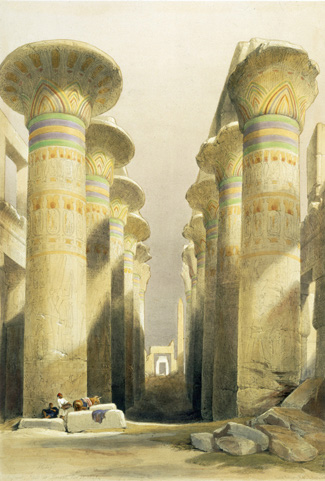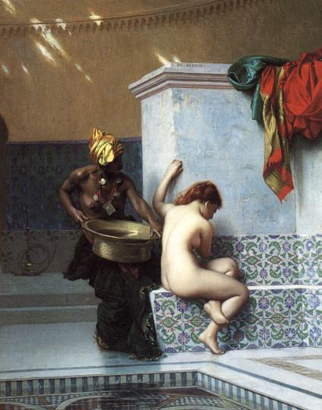4 Orientalism and European art
Be that as it may, such assumptions about the superiority and progress of the Western canon as defined by the Renaissance and Classical Antiquity, did indeed inform the academic practice of art throughout the nineteenth century. It remained more or less unchallenged until the emergence of the avant-garde in France later in the century.
In the case of Egypt, visual images tended to be of massively imposing ruins engulfed by sand with picturesque tribesmen arranged in the foreground to drive home the message of decline. No-one did this better than David Roberts, a Scottish painter who travelled in Egypt and the Holy Land in the late 1830s (Figure 4). The resulting studies fuelled his output for the rest of his career. A somewhat different inflection of Orientalism, involving a scarcely veiled sexuality, to be found in – or projected onto – the harem or the slave market, identifies the pictures of the French academician Gérome (Figure 5).


